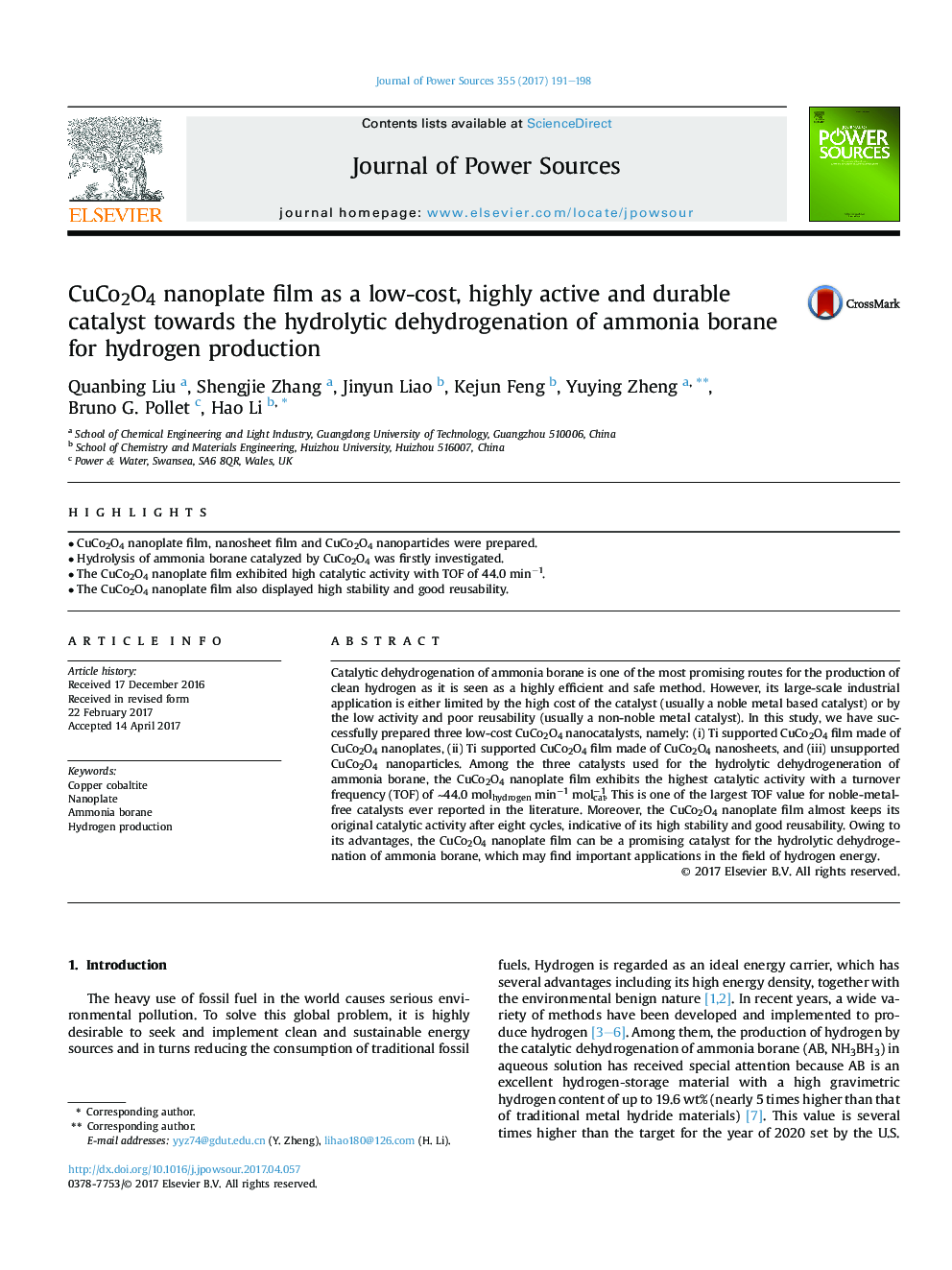| Article ID | Journal | Published Year | Pages | File Type |
|---|---|---|---|---|
| 5149131 | Journal of Power Sources | 2017 | 8 Pages |
Abstract
Catalytic dehydrogenation of ammonia borane is one of the most promising routes for the production of clean hydrogen as it is seen as a highly efficient and safe method. However, its large-scale industrial application is either limited by the high cost of the catalyst (usually a noble metal based catalyst) or by the low activity and poor reusability (usually a non-noble metal catalyst). In this study, we have successfully prepared three low-cost CuCo2O4 nanocatalysts, namely: (i) Ti supported CuCo2O4 film made of CuCo2O4 nanoplates, (ii) Ti supported CuCo2O4 film made of CuCo2O4 nanosheets, and (iii) unsupported CuCo2O4 nanoparticles. Among the three catalysts used for the hydrolytic dehydrogeneration of ammonia borane, the CuCo2O4 nanoplate film exhibits the highest catalytic activity with a turnover frequency (TOF) of â¼44.0 molhydrogen minâ1 molcatâ1. This is one of the largest TOF value for noble-metal-free catalysts ever reported in the literature. Moreover, the CuCo2O4 nanoplate film almost keeps its original catalytic activity after eight cycles, indicative of its high stability and good reusability. Owing to its advantages, the CuCo2O4 nanoplate film can be a promising catalyst for the hydrolytic dehydrogenation of ammonia borane, which may find important applications in the field of hydrogen energy.
Related Topics
Physical Sciences and Engineering
Chemistry
Electrochemistry
Authors
Quanbing Liu, Shengjie Zhang, Jinyun Liao, Kejun Feng, Yuying Zheng, Bruno G. Pollet, Hao Li,
